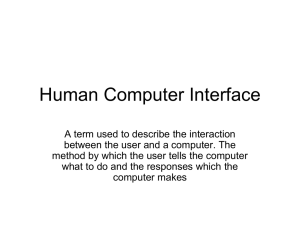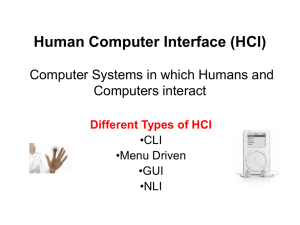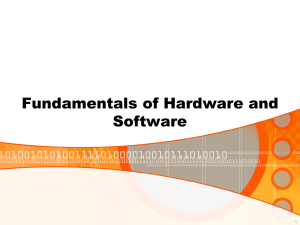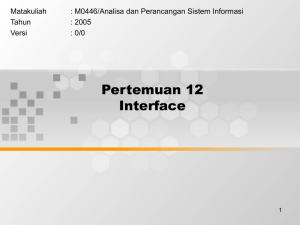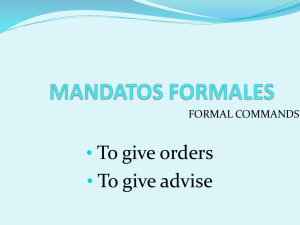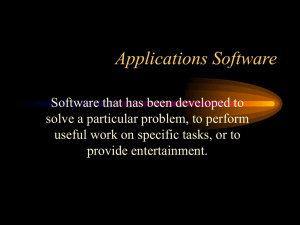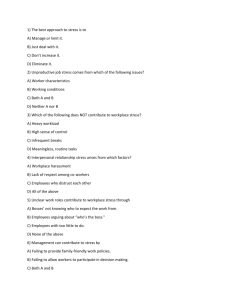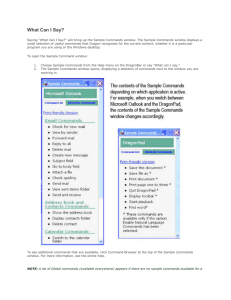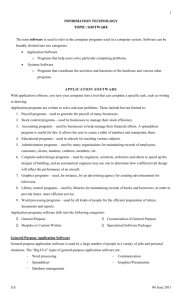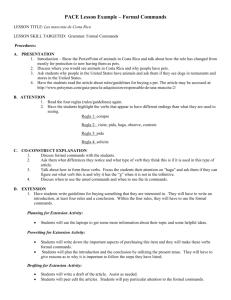Design for Human Computer Interaction
advertisement
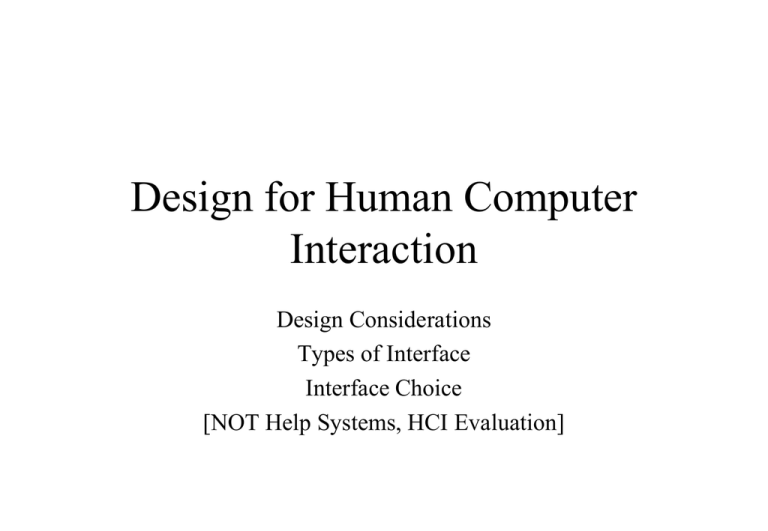
Design for Human Computer Interaction Design Considerations Types of Interface Interface Choice [NOT Help Systems, HCI Evaluation] Objective • objective – effective use of software • quick • accurate – selling of software • problems – different users – assessment of capabilities Human Characteristics • small short-term memory • huge, highly organised long-term memory • difficult with handling large numbers of bits of information (710 maximum) • difficulty with handling unrelated bits of information • intuitive, creative, pro-active • liable to make errors • distrust of systems about which it is not possible to theorise Machine Characteristics • large short-term memory (RAM) • (almost) infinite, but not necessarily well organised, long-term memory (secondary storage - discs, etc.) • can handle large amounts of information • can handle handle unrelated bits of information • make errors only if wrongly built • reactive HCI Design: • Objective: use machine characteristics to support and enhance human characteristics • HCI should: • • • • • use the user’s language be consistent be predictable provide error recovery assist the user Interface Types • direct manipulation • menu • command Direct Manipulation • model of ‘information space’ • manipulate model • immediate • good for most classes of user • examples wp, spread sheets, mac o/s, windows • advantages • control • ease of learning • immediate feedback • disadvantages • modelling • keeping track • memory usage (eg MS software) • speed of response Menus • selection from a presented set of choices • good for occasional users • examples mac o/s, windows, most program development environments • advantages • no need to memorise commands • little typing skill needed • avoids some errors • context obvious (to m/c) used with help • disadvantages • menu structures • keeping track • speed of operation esp exprerienced users Command • commands are typed in using the keyboard • good for regular users • examples MSDos, Unix, VMS • advantages • ease of implementation • use of natural language • commands can easily be combined • concise • disadvantages • learning langauge • errors • have to know commands even to use help Interface Choice • depends on profile of potential users • often a mix of types eg: – menu + sort-cut commands (PDEs, CAE) – direct manipulation + menus or commands (WP, SSHEET) • some systems have more than one interface – interfaces designed with specific sub-sets of user in mind Information Presentation • same considerations as for paper and video presentation • • • • • static vs dynamic precise vs relative textual, numerical or graphical how often updated colour – number, changes, consistency, pairings Poor interface design means that many software systems are never used. User-interface design will necessarily be a part of the overall system design, however if a system is broken down into smaller parts then the user-interface can be considered at that level. Diagram of the user-interface design process.
